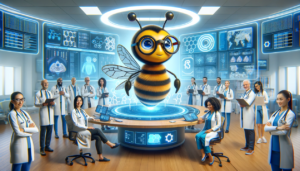
It’s “cool” to have software deliver output in different forms. It’s cool to ask a question with text and get an answer in code, or a drawing.
That’s not human intelligence.
All Machine Learning systems I’ve seen, including Large Language Models (LLMs), take a brute force approach. They need enormous input to deliver outputs that even approximate what a human child can do. And these outputs are just approximations. They’re not what a human child would do. Approximations can work for taking a restaurant reservation. They won’t work for detailed customer service responses.
Cars can drive themselves in a world that consists only of other cars. Add humans and it ceases to work. We’re unpredictable.
That’s what I like to call a Clue.
Machine to Machine

How do you advance these systems? By getting more input. By attaching them to other machines. Every device, and every box of tongue depressors in every drawer of every hospital, can communicate its real time status via radio networked software. The scheduling software can learn the condition of every machine to schedule maintenance, along with the current inventory to guarantee replenishment.

It’s not enough to have the people and rooms ready for the patient. Machines and goods must be accounted for as well. In the case of machines, this includes their condition and maintenance schedules .
What’s true for a hospital is true for a factory, for a fulfillment system, and (this is the important bit) for a city. Traffic lights can be made intelligent, with simple cameras and some back-end software. Intelligent, compatible water meters can detect the smallest leaks in a water system. We can do this with electricity, too. Networks have intelligence because connectivity is built into them.
Add sensor networks to your utilities.
Getting from here to there requires standards, and a top-down demand for simple additions to current devices. The electronics needed for this are dirt cheap. The standards process is ongoing.
The Bottom Line
Stop trying to replace people with Artificial Intelligence. Augment their capabilities by adding networked intelligence to everything they work with.
A Machine Internet can be built now. We don’t need Artificial General Intelligence.










